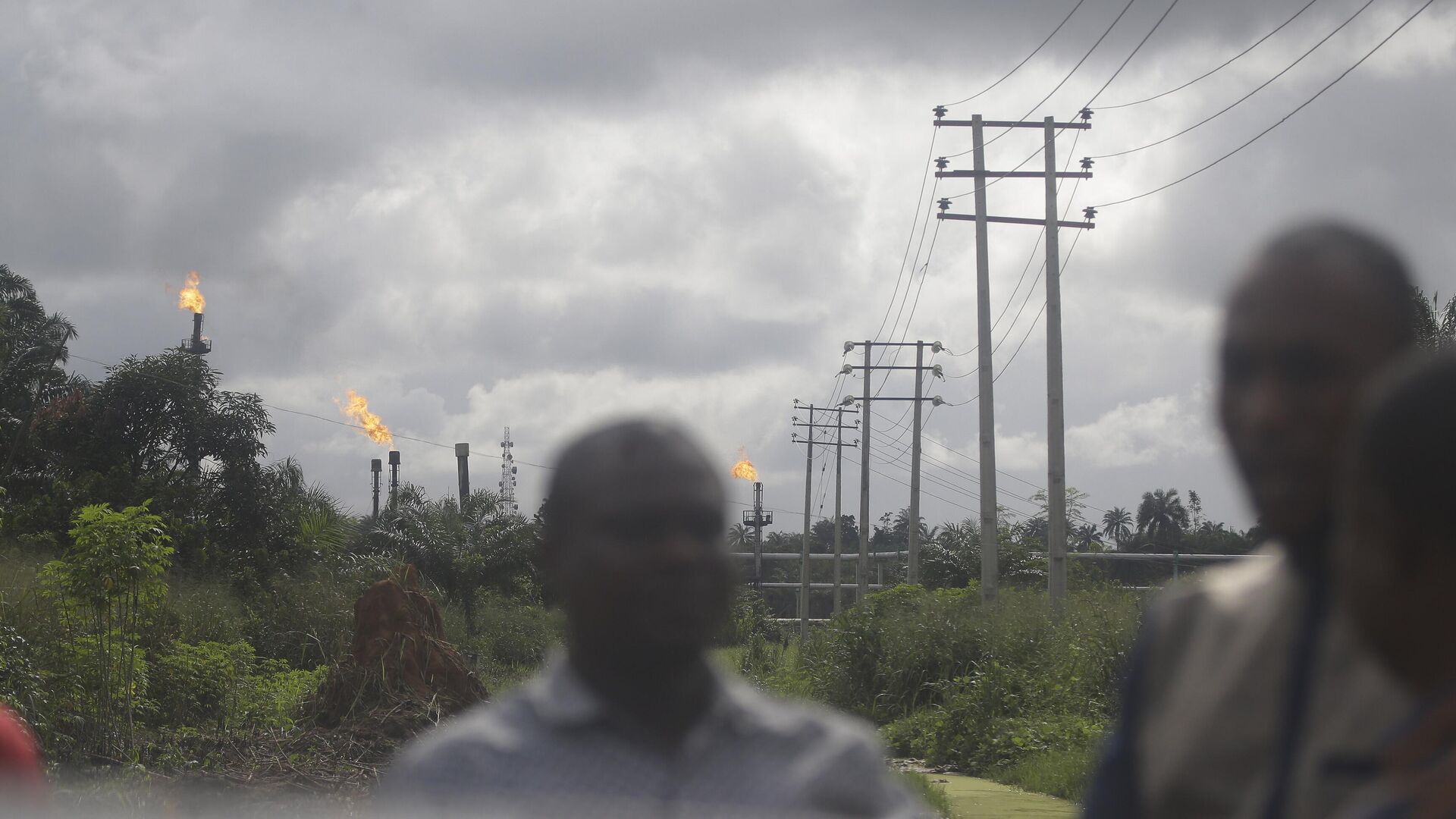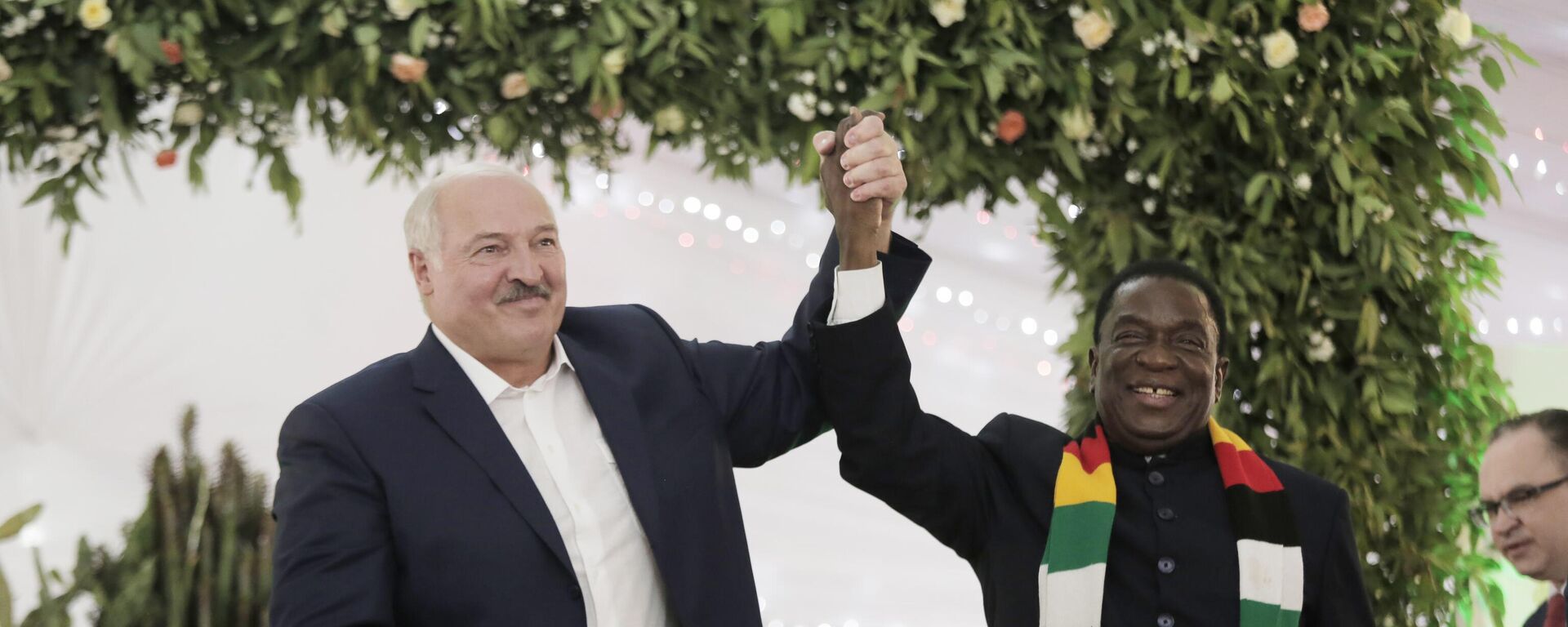https://en.sputniknews.africa/20240223/zimbabwes-mukuyu-gas-field-ranked-second-largest-discovery-in-sub-saharan-africa-in-2023-1065216912.html
Zimbabwe's Mukuyu Gas Field Ranked Second-Largest Discovery in Sub-Saharan Africa in 2023
Zimbabwe's Mukuyu Gas Field Ranked Second-Largest Discovery in Sub-Saharan Africa in 2023
Sputnik Africa
According to a recent report published by global energy research firm Wood Mackenzie, Namibia's Jonker-1 gas field, developed by British multinational oil and... 23.02.2024, Sputnik Africa
2024-02-23T14:40+0100
2024-02-23T14:40+0100
2024-02-23T15:20+0100
sub-saharan africa
zimbabwe
southern africa
gas
oil
energy
namibia
https://cdn1.img.sputniknews.africa/img/07e8/02/17/1065217744_0:102:3460:2048_1920x0_80_0_0_313183921fa0a70e1a0292edfb7add32.jpg
The Mukuyu gas field in Zimbabwe's Cabora Bassa Basin has been ranked by experts as the second-largest gas field discovered in sub-Saharan Africa last year, after Namibia's Jonker-1 field, said Scott McMillan, managing director of Australian license holder Invictus Energy.The size of the field is estimated at 36.4 billion cubic meters.According to him, the entire northern region of Zimbabwe bordering the Zambezi River — the Upper and Lower Angwa districts — are potentially rich in hydrocarbons. Gas exploration is currently active in the Mukuyu-1 and Mukuyu-2 blocks in Cabora Bassa Project.Of the 17 fields explored in tropical Africa last year, McMillan said, commercial gas discoveries were made in Namibia (Lesedi IX and Jonker-1), Zimbabwe (Mukuyu-2), Nigeria (Ntokon-1), Angola (Lumpembe), and Mozambique (Bonito-1).
https://en.sputniknews.africa/20240223/zimbabwe-belarus-mutual-trade-increases-eightfold-in-2023-1065215651.html
zimbabwe
southern africa
namibia
Sputnik Africa
feedback@sputniknews.com
+74956456601
MIA „Rossiya Segodnya“
2024
Muhammad Nooh Osman
https://cdn1.img.sputniknews.africa/img/07e7/04/0a/1058467512_0:0:1280:1280_100x100_80_0_0_ec723833bcbfcaed2e21952965ad99e4.jpg
Muhammad Nooh Osman
https://cdn1.img.sputniknews.africa/img/07e7/04/0a/1058467512_0:0:1280:1280_100x100_80_0_0_ec723833bcbfcaed2e21952965ad99e4.jpg
News
en_EN
Sputnik Africa
feedback@sputniknews.com
+74956456601
MIA „Rossiya Segodnya“
Sputnik Africa
feedback@sputniknews.com
+74956456601
MIA „Rossiya Segodnya“
Muhammad Nooh Osman
https://cdn1.img.sputniknews.africa/img/07e7/04/0a/1058467512_0:0:1280:1280_100x100_80_0_0_ec723833bcbfcaed2e21952965ad99e4.jpg
zimbabwe, southern africa, gas, oil, energy, namibia
zimbabwe, southern africa, gas, oil, energy, namibia
Zimbabwe's Mukuyu Gas Field Ranked Second-Largest Discovery in Sub-Saharan Africa in 2023
14:40 23.02.2024 (Updated: 15:20 23.02.2024) Muhammad Nooh Osman
Writer/Editor
According to a recent report published by global energy research firm Wood Mackenzie, Namibia's Jonker-1 gas field, developed by British multinational oil and gas company Shell, was recognized as the largest gas discovery in sub-Saharan Africa in 2023.
The Mukuyu gas field in
Zimbabwe's Cabora Bassa Basin has been ranked by experts as the second-largest gas field discovered in sub-Saharan Africa last year, after Namibia's Jonker-1 field, said Scott McMillan, managing director of Australian license holder Invictus Energy.
"Having the Mukuyu discovery independently recognised as one of the largest discoveries in 2023 and acknowledged among several multinationals confirms our confidence in the quality and scale of this new gas field in Sub-Saharan Africa," MacMillan said, as quoted by local newspaper The Herald.
The size of the field is estimated at 36.4 billion cubic meters.
According to him, the entire northern region of Zimbabwe bordering the Zambezi River — the Upper and Lower Angwa districts — are potentially rich in hydrocarbons. Gas exploration is currently active in the Mukuyu-1 and Mukuyu-2 blocks in Cabora Bassa Project.
Of the 17
fields explored in tropical Africa last year, McMillan said, commercial gas discoveries were made in Namibia (Lesedi IX and Jonker-1), Zimbabwe (Mukuyu-2), Nigeria (Ntokon-1), Angola (Lumpembe), and Mozambique (Bonito-1).



